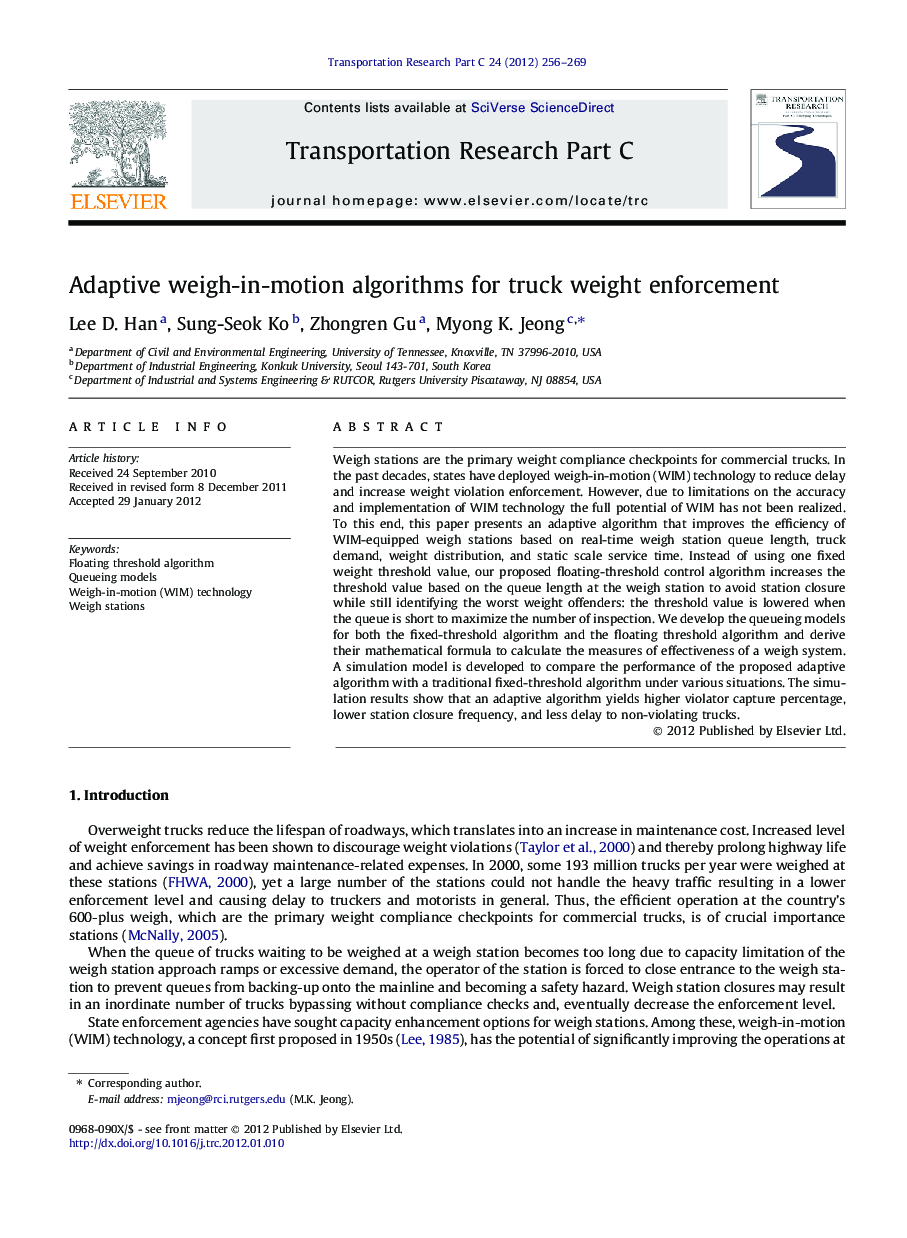| Article ID | Journal | Published Year | Pages | File Type |
|---|---|---|---|---|
| 525300 | Transportation Research Part C: Emerging Technologies | 2012 | 14 Pages |
Weigh stations are the primary weight compliance checkpoints for commercial trucks. In the past decades, states have deployed weigh-in-motion (WIM) technology to reduce delay and increase weight violation enforcement. However, due to limitations on the accuracy and implementation of WIM technology the full potential of WIM has not been realized. To this end, this paper presents an adaptive algorithm that improves the efficiency of WIM-equipped weigh stations based on real-time weigh station queue length, truck demand, weight distribution, and static scale service time. Instead of using one fixed weight threshold value, our proposed floating-threshold control algorithm increases the threshold value based on the queue length at the weigh station to avoid station closure while still identifying the worst weight offenders: the threshold value is lowered when the queue is short to maximize the number of inspection. We develop the queueing models for both the fixed-threshold algorithm and the floating threshold algorithm and derive their mathematical formula to calculate the measures of effectiveness of a weigh system. A simulation model is developed to compare the performance of the proposed adaptive algorithm with a traditional fixed-threshold algorithm under various situations. The simulation results show that an adaptive algorithm yields higher violator capture percentage, lower station closure frequency, and less delay to non-violating trucks.
► An adaptive threshold algorithm was developed for weigh-in-motion based weight enforcement. ► The algorithm keeps station closure to a minimum while catching the worst weight offenders. ► Microscopic traffic simulations were performed to verify the algorithm for an array of scenarios. ► Queueing theory based analytical solutions were developed to evaluate and validate the algorithm. ► The algorithm significantly improves performance for all demand and violation conditions.
